What are the flavor characteristics of geisha and rose summer? which is better, candle candle or rose summer coffee?
For professional baristas, please follow the coffee workshop (Wechat official account cafe_style)
What's the difference between a geisha and Rosa?
The pronunciation of the same thing comes from the Japanese word for geisha.
What kind of rose does Rosa belong to?
Jade Manor (La Esmeralda) usually divides its rose summer into three batches-red, green, blue and purple.
Some of the red bid batches are the bidding batches of the jadeite manor, and some are the batches sold directly by the jadeite manor, including the batches that will appear in the auction, such as sunlight, washing and so on.
In the Jade Manor, quality control is first reflected in the careful guidance of farmers who pick fresh fruit. At the same time, the price will be increased to pay the pickers to pick only fully ripe and bright red coffee fruits.
In the preparation stage, the fresh fruits of the picked coffee will be carefully examined to see if there are any rotten fruits or green beans. It takes a lot of time to deal with the details and study how to present a good feel, which makes the Emerald Manor stand out, and it is easy to distinguish it from other coffee producers in the world.
Our latest rose summer on the shelf is the jadeite special selection in the jadeite manor, also known as bidding rose summer, bidding lot (Special-Geisha): represents the preferred batch of the jadeite manor, planting above 1550 meters above sea level (even more than 1900 meters), and cup test scores are all above 90 points.
Feicui Manor is an extremely experimental manor. By comparing 400 coffee varieties, sample treatment and cup testing are carried out every year, and the varieties with excellent cup test performance are selected (this is how rosy summer was discovered in that year). The batches of this kind of innovative experimental treatment can not even be found at auction.
The red standard of jadeite has three characteristics:
1. Strong traceability: each batch can be traced back to the date of picking, specific plots, tree age, etc.
two。 Altitude: all batches are above 1600 meters above sea level, some above 1900 meters above sea level
3. Cup test score: the cup test score must be more than 90 points (SCAA standard) before it can be called a red mark.
In 1931, a team of botanists visited southern Ethiopia and found a species of rose beans near the village of Gesha, with tall trees and larger seeds than ordinary Ethiopian beans. They took the seeds to Kenya, planted them in nurseries and grew up five years later. They took the fruits from the healthiest samples and brought them to Uganda and Tanzania. In 1953, CATIE, a Costa Rican research institute, obtained some seeds from Tanzania for research.
The first person to bring Rosa to Panama from Costa Rica was Pachi Serracin, the old owner of Don Patch Manor, in 1963, but Rosa was not popular in Panama at first. The production of Rosa was very low and the economic benefit was very low, only mixed with other coffee beans to sell. Some rose summer trees can be found in each manor, and some even serve as windbreaks in the coffee garden. Until 2000, the little Peterson of the Emerald Manor found that the flavor of Rose Summer was so charming that they were not sure whether consumers would accept it.
Best Panama in 2003, Emerald Manor won the first place of the year by Rose Summer, and the strong and complex flavor surprised all the judges. Over the next decade, Rosa prevailed in all raw bean competitions, and coffee farmers in Central and South America flocked to grow Rosa in Costa Rica, Bolivia, Colombia and other countries. Although there is still a gap in flavor between Guixia and Panama, Guixia is like the golden bean in coffee beans, and no one wants to miss it.
Others hope to go back to the origin of Rose Summer and organize several expeditions to go deep into the primeval forests of southwestern Ethiopia, but in the end, Panama seems to be the best producer of Rose Summer in the world. Different treatments also bring different flavors to Rosa, from the beginning of water washing to the later sun, honey treatment, more and more detailed and complex.
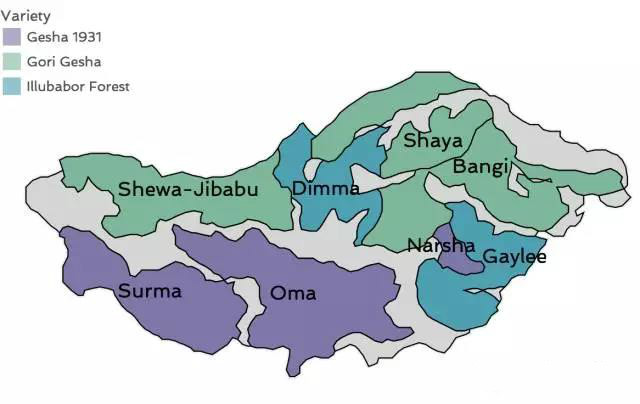
What is the difference between going to Dixixia Village and an ordinary Ethiopian manor? What do OMA and SURMA refer to in the batch number? What does the series of numbers 51, 72 and 59 mean? What's the difference between Gesha1931 and Gori Gesha?
Manor background
Adam Overton and Samuel Rachel have been growing Ethiopian Rose Summer in nearly 500 hectares of Rosa Village since 2011, and their sole goal is to produce the best coffee in the world. Since 2008, after three years of searching, they have finally found an environmental system suitable for coffee growth in 1900-2100 meters high altitude, with tropical rain forest, suitable climate, fertile forest soil and long history of forest.
The coffee farm in Ruoxia Village has a total area of 471 hectares, and 300 hectares of coffee has been planted in 2015, with an increase of 50 hectares in 2016. Rosa was selected from the native coffee forest (Gori Gesha), 20 kilometers from the manor, which is where the Panamanian variety came from. With the help of Mr. Willem Boot, the godfather of Rosa, the coffee in Rosa Village has won many good results in the world competition.
Strong traceability and high quality control
Unlike most Ethiopian coffee, it needs to be exported through ECX (Ethiopian Commodity Exchange) or cooperatives. Because of its size of nearly 500 hectares, Ruoxia Village Coffee Manor can be treated and exported independently as a single manor. Therefore, it has traceability unmatched by other Ethiopian raw beans.
Each batch of raw beans can be traced back to its specific plot, variety, tree age, picking date, sun (washing) treatment time and other links, effectively ensuring the transparency of each link and the possibility of quality control.
What is the difference between Gori Gesha and Gesha1931?
Gori Gesha and Gesha 1931 all refer to the name of the variety planted.
Three varieties were planted in Guoxia Village, namely, Gori Gesha, Gesha 1931 and Illubabor Forest. The first two varieties are Rosa rugosa, while Illubabor Forest is a disease-resistant variety provided by the Ethiopian Research Institute.
Among them, Gori Gesha is a rose variety from the wild coffee forest Gori Gesha near the manor, which covers the genetic diversity of Rosa, so it is named after the forest.
Gesha 1931 is selected from several rose summer varieties in Gori Gesha forest, which is closest to Panama rose summer. The selection of varieties depends on the shape of coffee plant, the appearance of coffee beans and the results of cup test. It is also named Gesha 1931 because 1931 was the year in which the rose variety was discovered from Ethiopia.
What do OMA, SURMA, etc. Represent?
The manor is divided into nearly 500 hectares of land according to different varieties and microclimate (as shown in the following figure):
Therefore, the distribution of varieties is as follows:
Planting Gori Gesha: Shewa-Jibabu; Shaya, Bangi
Planting Gesha 1931: Surma; Oma; Narsha
Planting Illubabor Forest: Dimma; Gaylee
What is the meaning of the number in the batch name?
At this time, we should start to talk specifically about the traceability of Rose Xia Village.
Picking date data of partial batches from 2016 to 2017 in Guoxia Village (figure: bidding information of Guoxia Village)
Take the sunburn batch of the OMA plot of Japanese champion Guizhiro Ishitani as an example (see picture above). The planting variety of the plot is Gesha 1931, and the interior of the plot is divided into five sun batches of 51, 72, 77, 86 and 90. The closer the area is, the closer the maturity and picking period is. In addition, OMA#27 is an one-to-one washing batch for the site (the location is limited, which is not shown in the picture above). The competition bean of Shigu Gui is a competitive lot of OMA#51, and one of the batches ordered by Grand Cru Coffee is the same batch of OMA#72.
After many cup tests and screening, Grand Cru Coffee selected three distinct sun batches and purchased them in batches, of which the first batch of Surma#85 and Shewa-Jibabu#59 has been sold out; the second batch of replenishment Shewa-Jibabu#59 the same batch, Oma#72 the same batch of spot supply.
The specific cup test flavor is as follows:
1 Shewa-Jibabu#59 same batch (Gori Gesha)
The batch has outstanding sweetness, obvious strawberry, peach, papaya and other flavors, and the flower smell is delicate and the taste is as rich as cream.
2 Oma#72 in the same batch (Gesha 1931)
This batch is sugar-soaked fruit with strong floral aroma and high complexity.
The above two batches of Rosa rugosa were treated by solarization. First remove the floating impurities, and then cover the African-style elevated scaffolding with film and plastic sheet. the total drying time is 18-30 days.
Rose summer in Rose Xia Village
(Gesha Village Coffee Estate Gesha Natural)
Variety: rose summer (Gori Gesha)
Treatment: insolation
Production season: 2017 new season
Flavor description: strawberry, peach, papaya, flower fragrance, creamy, rich
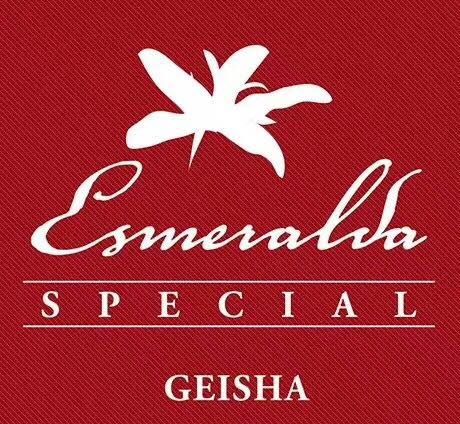
2017 season Panama Jade Manor Red bid Rose Summer Geisha bidding Geisha washing treatment
Panama Geisha Hacienda La Esmeralda
Country: Panama
Grade: red sign
Producing area: Bogut
Baking degree: shallow baking
Treatment: washing
Variety: Rose summer
Manor: Jade Manor
Flavor: litchi, peach, sweet potato
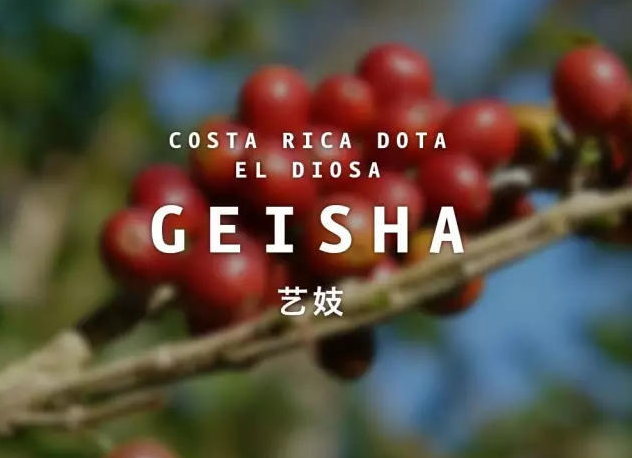
The goddess Rose Summer
Located in the most famous tarrazu region of Costa Rica, the Dota region is famous for producing micro-batch geisha varieties! In 1865, the Dota region enjoyed the reputation of good Costa Rican coffee, because the highway construction extending to the capital had to pass through Tarazu District when it was developed to the Dota Valley, so the future Goyuan Coffee Bureau sub-area marking is used to mark Dota tarrazu, this area is a typical plateau topography, whether soil or temperature and humidity is the best choice in terms of coffee growing conditions.
The Goddess Manor is a manor established in the 1960s. The Goddess Manor grows coffee organically and uses local native trees and fruit trees as shade. The fertilizer used is also coffee cherry mixed molasses, adding fertile soil with high mineral content in the adjacent mountain area with microbial fermentation to produce organic fertilizer that can enhance coffee value and disease resistance, and is also used to use California earthworms as culture soil. and directly in the fertilizer period as the main nutrient source of coffee trees and mixed planting a variety of coffee varieties, all to purchase ripe red-purple berries and widely control the soaking and fermentation process. Develop a very unique constant temperature treatment method, not much and not a lot of fermentation degree so that the clarity and complexity of coffee get an excellent balance, so that its flavor shows more stability, which very special flavor of Geisha is shown one by one, it is really intoxicating.
Dota E1 Diosa Geisha
Origin: Costa Rica
Production area: Tarrazu
Variety: Geisha
Altitude: 1800 m
Soil: volcanic soil
Rating: SHB
Treatment: washing
Harvesting: manual harvesting
Flavor:
Tea, orange, plum fruit, cranberry, flower, vanilla, almond
[wet fragrance] Flower, chocolate, vanilla, bright malic acid, cranberry
Flavor characteristics: lemon and citrus aromas, soft grapefruit acid and sweet fruit sugar, medium mellow thickness, clean and smooth taste
Taobao link: https://item.taobao.com/item.htm?spm=a1z10.5-c.w4002-15673140460.41.23e7a496Br02sy&id=541755048209
Important Notice :
前街咖啡 FrontStreet Coffee has moved to new addredd:
FrontStreet Coffee Address: 315,Donghua East Road,GuangZhou
Tel:020 38364473
- Prev
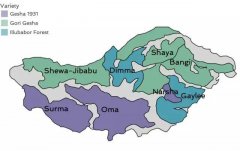
Coffee, raw beans, wholesale, red standard, how much is rose summer, Costa Rican goddess manor, how much is a pack?
For professional baristas, please follow the coffee workshop (Wechat official account cafe_style). What's the difference between a geisha and Rosa? The same thing, pronounced from a Japanese geisha. What kind of jadeite manor does rose summer belong to? La Esmeralda usually divides its rose summer into three grades: red mark, green mark, blue mark and purple mark, some of which are jadeite villa.
- Next
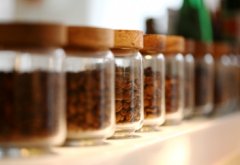
The selection and Preservation of Coffee beans how to buy Raw beans
Professional baristas Please follow the Coffee Workshop (Wechat official account cafe_style) now we know that raw coffee beans can be kept for one or two years, but roasted coffee beans can only be preserved for about two weeks to a month, there is a big difference between the two. After considering various factors, some people try to bake by themselves, while others start by buying fresh.
Related
- Beginners will see the "Coffee pull flower" guide!
- What is the difference between ice blog purified milk and ordinary milk coffee?
- Why is the Philippines the largest producer of crops in Liberia?
- For coffee extraction, should the fine powder be retained?
- How does extracted espresso fill pressed powder? How much strength does it take to press the powder?
- How to make jasmine cold extract coffee? Is the jasmine + latte good?
- Will this little toy really make the coffee taste better? How does Lily Drip affect coffee extraction?
- Will the action of slapping the filter cup also affect coffee extraction?
- What's the difference between powder-to-water ratio and powder-to-liquid ratio?
- What is the Ethiopian local species? What does it have to do with Heirloom native species?

